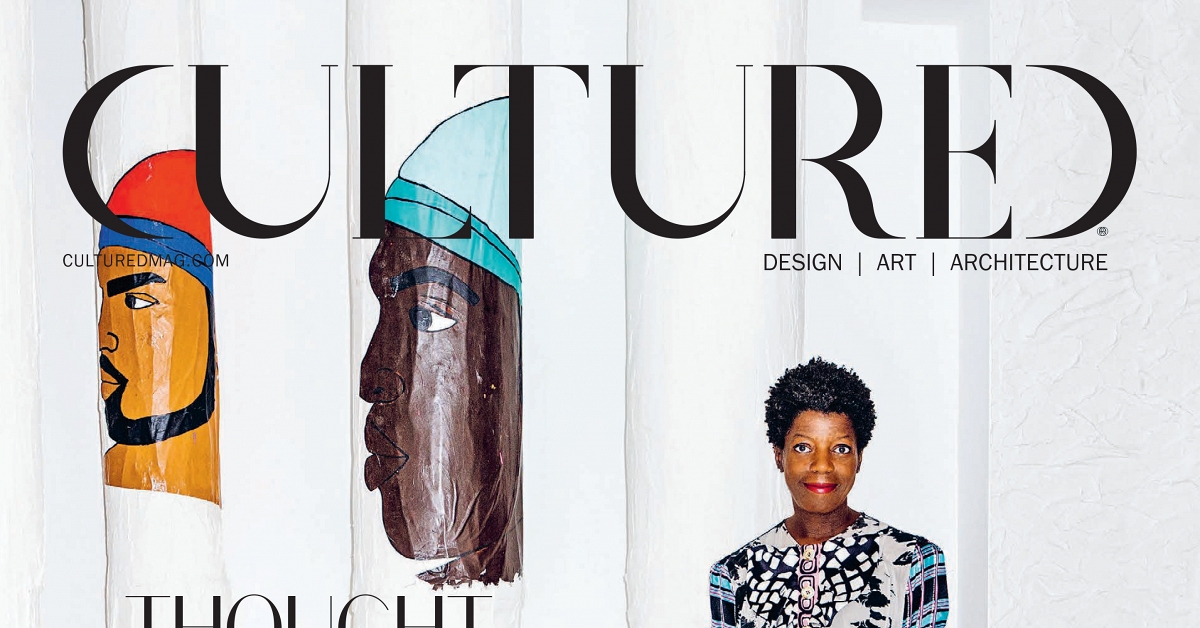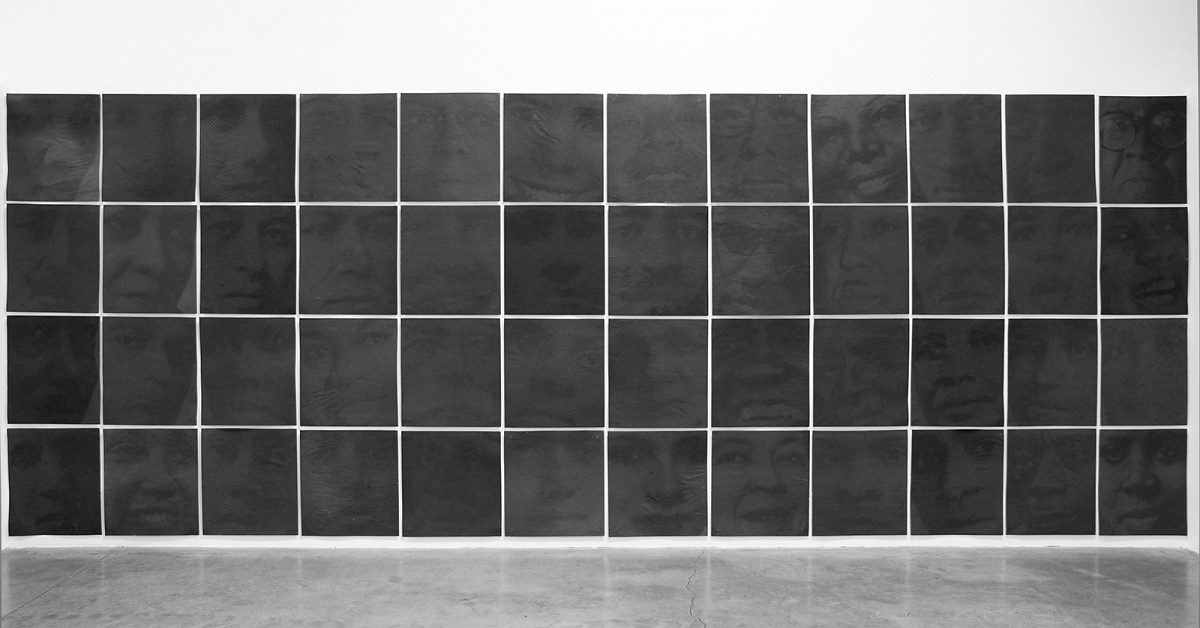Artist Caroline Kent, former Redbird runner, returns to University Galleries for exhibit
Illinois State University / Oct 29, 2021 / by John Moody / Go to Original
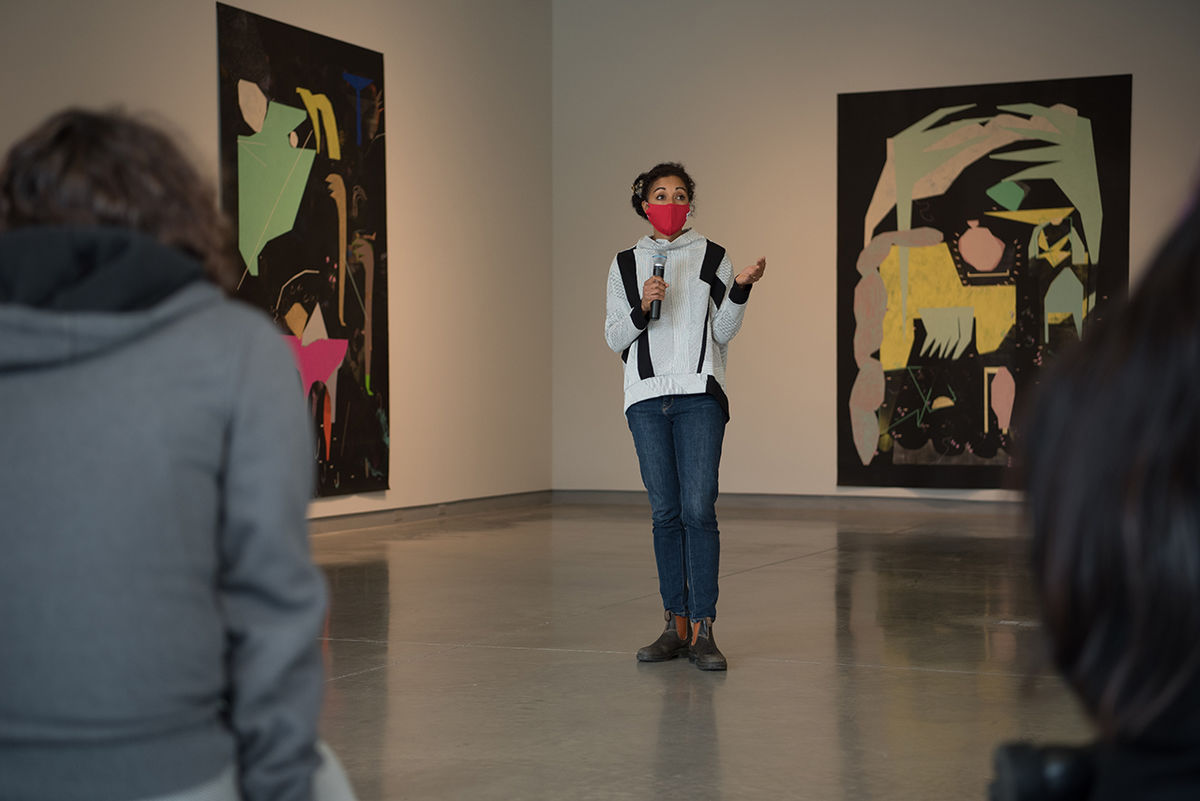
Artist Caroline Kent, a former Redbird track athlete, speaks at an exhibit of her work now running through December 16 at University Galleries in Uptown Normal.
Athlete turned artist, Caroline Kent ’98, returned to campus October 15 to be honored on Alumni Day and to commemorate the opening of an exhibit of her work. The exhibit,Caroline Kent: What the stars can’t tell us,is running at University Galleries through December 16, 2021.
“To be back at ISU has been so nostalgic, so wonderful, and I’m so pleased,” Kent said. “I think it’s the first time my parents had an opportunity to see me speak, and it made them so proud.”
Her parents, James and Victoria Kent, made the drive from the family’s hometown of Sterling. It was the first time they’d been back to campus since watching their daughters’ final track and field event in 1997.
The three Kent sisters—Caroline, her identical twin, Christine, along with their older sister, Angela—were all members of the Illinois State track team. Middle-distance sprinters and high jumpers, they were pretty darn good.
The trio were part of a state champion relay team at Sterling High School in 1991. Caroline Kent was the Missouri Valley Conference 600 indoor champion as a sophomore, a challenging event. She said there are parallels between being an athlete and an artist.
“My identity was wrapped up in athletics, but athletics can only last so long,” she said. “I put that residual energy into art, into painting, and drawing. Art is like a long-distance run. You need work ethic and determination. As a runner I did not tire easily.”
She didn’t start out college studying art, but a friend convinced her to reconsider.
“He was a wise grad student named Norman Bilsbury,” Kent said. “He told me to follow my heart.”
It turns out that Bilsbury, who later married one of Kent’s good friends, was on to something: Kent the star athlete is now a successful artist whose work is getting attention in the art world. Her work has been featured in such prominent collections as the Art Institute of Chicago; DePaul Art Museum, Chicago; Walker Art Center, Minneapolis; and the New Orleans Museum of Art, New Orleans, among others. She’s had exhibits at the Museum of Contemporary Art (MCA), Chicago; DePaul Art Museum, Chicago; Walker Art Center, Minneapolis; California African American Museum, Los Angeles; and others, including museums and galleries in New York and San Francisco. She’s been written about in theChicago Tribune,The New York Times,andArt News, to name a few.
Former first lady Michelle Obama recently discovered Kent and even bought a painting for her family’s personal collection. Kent gave her a private tour of her MCA show.
“She wanted to know about me and my work,” Kent said, sounding awestruck. “It was unreal, wild.”
In addition to her bachelor’s degree at Illinois State, Kent also earned an M.F.A. from the University of Minnesota. A Chicago-based artist, she works as a teacher and advisor at Northwestern University in Evanston. She’s also a wife and a mother to two young children and a teenage stepdaughter. She loves coming back downstate to the open spaces that she misses living in Chicago.
Kendra Paitz, MBA ’06, M.A. ’11, director and chief curator of University Galleries, brought Kent and her art back to Normal and appreciates her gifts as an artist.
“We are thrilled to be surrounded by Caroline Kent’s extraordinary work each day,” Paitz said. “It’s been a joy to plan and realize this exhibition with Caroline and to share it with our students and community, especially since she was once a student visiting University Galleries.
“Our visitors can see seven of her monumental abstract paintings—including a few brand-new ones—as well as a site-responsive installation from her recentVictoria Veronicaseries, which isrooted in a semi-fictional story about twins communicating telepathically.”
In her appearance at University Galleries, Kent was enthusiastic as she spoke about her art and took questions from an interested audience. Her paintings, 8-9 feet tall, surrounded her in pastel colors on black backgrounds hanging from the gallery’s walls. There was a warmth between Kent and the audience as she spoke comfortably about her work and her journey to becoming an artist.
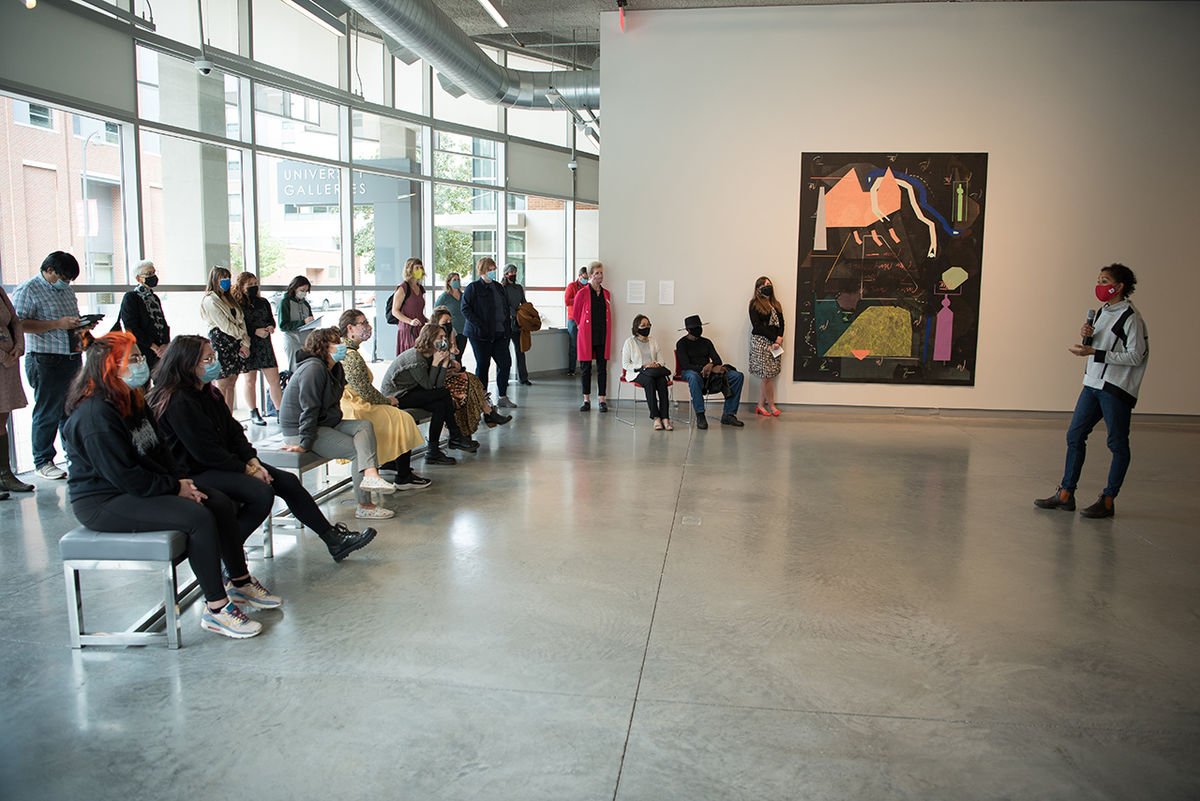
Artist Caroline Kent speaks at University Galleries at an exhibit of her work.
“These works represent a coming together of early collage,” Kent said. “It found its form on black canvas.”
She works with acrylic paints and describes herself as an abstract painter. The choice of black canvas was well thought out over a period of time.
“I’m trying to create something mysterious in material, and I’m always pushing up against conventions,” she said. “For example, I chose the black canvas because I liked how the light illuminated off the dark canvas; it didn’t absorb it but instead lit it.”
Her work is not confined to painting. In addition, her art includes painting, drawing, performance, installation pieces, and writing.
“I’m a painter though, and everything else flows from or connects to my painting,” she said.
Her influences are eclectic and include foreign films, which she watched a lot of during her undergraduate years at Illinois State, saying that she could relate to the “otherness” of the characters. Russian artists were an influence in her early search for form. And, her time as a Peace Corps volunteer in Romania made a lasting impact on her.
“The landscape was so different and such a contrast to the Midwest,” she said. “To think that people could live in such beautiful colors, a color palette of pastels. It really imprinted on me. I was really in search of my own form.”
The lateJacqueline Richards, an Illinois State art professor, also made a profound impression on her at a young age. Unfortunately, Richards, who was an abstract painter, died only a few weeks after Kent met her.
“Having a Black female art professor was a rare treat,” Kent said. “I can only imagine how she could have impacted me on my own journey to abstraction.”
In addition, Kent was influenced by Pamela Blum and Harold Boyd, both members of the art faculty when she was a student here. Boyd came to see Kent at University Galleries on a recent trip.
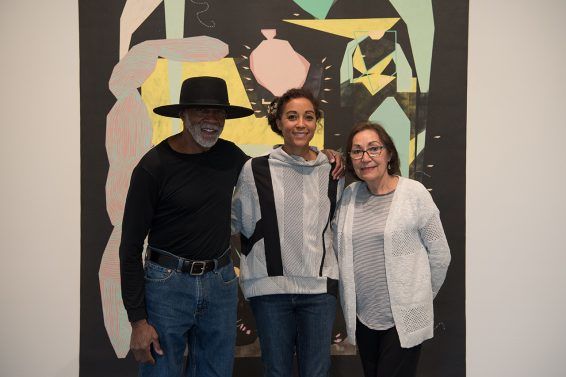
Caroline Kent and her parents, James and Victoria Kent, pose at University Galleries.
For Paitz, seeing Kent and Boyd reconnect and watching her “generous interactions with inquisitive students” have been among the best moments of Kent’s return to the place where her life in art began. Paitz also took note of Kent’s appreciation for those who taught her, including Richards.
“She’s used this exhibition to draw attention to the legacy of another influential former professor, the late artist Jacqueline Richards,” Paitz said.
Kent encourages artists to take risks and to avoid pursuing the familiar, which she said can be death to an artist’s practice. An artist, she said, should avoid being comfortable with their own status quo.
“Art doesn’t get magically made,” Kent said. “There’s thought given to form. Painting is not immediate; it’s a slow, contemplative activity to produce and to observe and to think about the temporal aspect. I think about that.”
Spoken like an artist and a runner.



